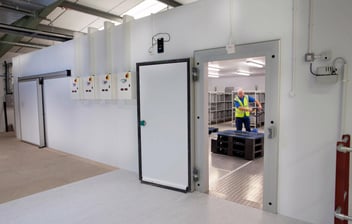How to achieve efficiency without boosting the budget? This is a problem faced by owners and users of industrial refrigeration systems, as well as installers and designers.
Although everyone is benefited through the reduction of costs in equipment and cooling systems, this should not mean a loss in the quality and safety of them. Only the balance between these two factors will lead to the success of any project to implement CO2 as a refrigerant gas.

Homologate criteria and expectations around the cost of the industrial refrigeration system:
There isn’t just one answer to achieve this goal. However, an extremely important step that must be initiated is the standardization of criteria. Due to the interdisciplinary nature of refrigeration projects, decision making will have different approaches. Which one of them prioritize?
1. CO2 or traditional systems? The value installation and return on investment
The change of "traditional" refrigerants to a refrigeration system with natural gases is a process that can generate concern in owners and producers. This concern becomes greater when considering the total costs that such a change represents. How much will the installation cost? How much budget to allocate to maintenance? What happens if spare parts are required?
On the one hand, and as expected, the owner of the installation in refrigeration and its analysts will base their decisions thinking about what is best for their budget and financial projections. Normally, doing so consider two important factors:
- The NPV (Net Present Value)
This factor is considered whenever a long-term investment is made and determines if that investment will help increase the value of the company. Although a CO2 cooling system meets this requirement, it’s important to convey this benefit to the owner.
- The IRR (Internal Rate of Return)
This projects the profitability of the investment based on the future returns that are expected from the performance. Implementing a CO2 system, in that sense, should be seen as a possibility not only to increase productivity, but to reduce costs in consumables and energy expenditure.
2. The side of engineers and technicians: the responsibility to reduce costs.
When we consider the point of view of the owners of the refrigeration system, we can offer better alternatives. When evaluating and deciding between a CO2-based system or opting for traditional technology such as that based on conventional refrigerants such as HFC, it’s essential for designers and the engineering team to seek cost optimization through energy efficiency and a design that is current according to the new regulations, fulfilling more technical objectives.
Finally, contractors and installers have the cost reduction approach associated with the technology and materials that are available in a timely manner. Currently, it’s a fact that any group to which it belongs, must be constantly training to understand the various approaches that comprise the cold chain, as well as the capabilities of it.
Related
Discover more related articles

5 rules of thumb for cooling chamber design
When it comes to servicing a cooling room, the first step will always be a good design.Preventive maintenance begins at the early stages of quoting,...
Read more »
Transcritical CO2 system: Is it an alternative for your refrigeration?
Although the use of CO2 as refrigerant gas in industrial refrigeration systems is very old, lately we have witnessed an increase in its...
Read more »
